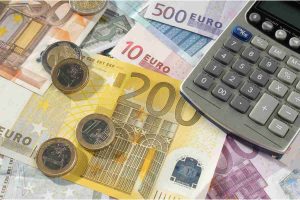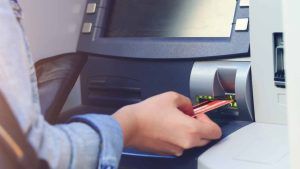The cash dividend declared is $1.25 per share to stockholders of record on July 1, (date of record), payable on July 10, (date of payment). Because financial transactions occur on both the date of declaration (a liability is incurred) and on the date of payment (cash is paid), journal entries record the transactions on both of these dates. The Dividends Payable account appears as a current liability on the balance sheet.
- To illustrate, assume that the Red Company reports net assets of $5 million.
- The dividend declared account is a temporary account in which it will be cleared at the end of the period with the retained earnings account.
- In return, the company may choose to distribute some of its earnings to these owners, or shareholders, in the form of dividends.
- For example, Woolworths Group Limited generally pays an interim dividend in April and a final dividend in September or October each year.
When the company makes a stock investment in another’s company, it may receive the dividend from the stock investment before it sells it back. Likewise, the company needs to properly make the journal entry for the dividend received based on whether it owns only a small portion or a large portion of shares. To illustrate, assume that Duratech Corporation’s balance sheet at the end of its second year of operations shows the following in the stockholders’ equity section prior to the declaration of a large stock dividend. With this journal entry, the statement of retained earnings for the 2019 accounting period will show a $250,000 reduction to retained earnings. However, the statement of cash flows will not show the $250,000 dividend as it has not been paid yet; hence no cash is involved here yet.
Another scenario is a mature business that believes retaining its earnings is more likely to result in an increased market value and share price. In other instances, a business may want to use its earnings to purchase new assets or branch out into new areas. Most companies like Woolworths, however, attempt dividend smoothing, the practice of paying dividends that are relatively equal period after period, even when earnings fluctuate. When dividends are distributed, they are stated as a per share amount and are paid only on fully issued shares.
A stock dividend is a distribution of shares of a company’s stock to its shareholders. The number of shares distributed is usually proportional to the number of shares that each shareholder already quickbooks workers comp owns. This journal entry is made to eliminate the dividends payable that the company has made at the declaration date as well as to recognize the cash outflow that is not an expense.
Time Value of Money
The journal entry of the distribution of the large stock dividend is the same as those of the small stock dividend. No journal entry is recorded by the corporation on either the date of record or the ex-dividend date because they do not relate to any event or transaction. Those dates simply allow Hurley to identify the owners to whom the dividend will be paid. The journal entry to distribute the soft drinks on January 14 decreases both the Property Dividends Payable account (debit) and the Cash account (credit). The major factor to pay the dividend may be sufficient earnings; however, the company needs cash to pay the dividend. Although it is possible to borrow cash to pay the dividend to shareholders, boards of directors probably never want to do that.
Dividends in Accounting
While a company technically has no control over its common stock price, a stock’s market value is often affected by a stock split. When a split occurs, the market value per share is reduced to balance the increase in the number of outstanding shares. In a 2-for-1 split, for example, the value per share typically will be reduced by half. As such, although the number of outstanding shares and the price change, the total market value remains constant.
A dividend is a payment of a share of the profits of a corporation to its shareholders. Dividends for a corporation are the equivalent of owners drawings for a non-incorporated business. It is a temporary account that will be closed to the retained earnings at the end of the year. Suppose a corporation currently has 100,000 common shares outstanding with a par value of $10.
Dividends are often paid on a regular basis, such as quarterly or annually, but a company may also choose to pay special dividends in addition to its regular dividends. The announced dividend, despite the cash still being in the possession of the company at the time of the announcement, creates a current liability line item on the balance sheet called “Dividends Payable”. Dividends, whether in cash or in stock, are the shareholders’ cut of the company’s profit. A company may issue a stock dividend rather than cash if it doesn’t want to deplete its cash reserves.
A small stock dividend is viewed by investors as a distribution of the company’s earnings. Both small and large stock dividends cause an increase in common stock and a decrease to retained earnings. This is a method of capitalizing (increasing stock) a portion of the company’s earnings (retained earnings). Instead, the company prepares a memo entry in its journal that indicates the nature of the stock split and indicates the new par value. The balance sheet will reflect the new par value and the new number of shares authorized, issued, and outstanding after the stock split. To illustrate, assume that Duratech’s board of directors declares a 4-for-1 common stock split on its $0.50 par value stock.
Cash Flow Statement
If the corporation’s board of directors declared a cash dividend of $0.50 per common share on the $10 par value, the dividend amounts to $50,000. Dividends Payable is classified as a current liability on the balance sheet, since the expense represents declared payments to shareholders that are generally fulfilled within one year. The common stock dividend distributable is $50,000 — calculated by multiplying 500,000 x 10% x $1 — since the common stock has a par value of $1 per share. Similar to the cash dividend, the stock dividend will reduce the retained earnings at the year-end. However, as the stock usually has two values attached, par value and market value, it considered less straightforward than the cash dividend transaction.
On the day the board of directors votes to declare a cash dividend, a journal entry is required to record the declaration as a liability. The company can make the cash dividend journal entry at the declaration date by debiting the cash dividends account and crediting the dividends payable account. The company can make the large stock dividend journal entry on the declaration date by debiting the stock dividends account and crediting the common stock dividend distributable account.
What Type of Account is Dividends Payable (Debit or Credit)?
Cumulative preferred stock is preferred stock for which the right to receive a basic dividend accumulates if the dividend is not paid. Companies must pay unpaid cumulative preferred dividends before paying any dividends on the common stock. It is useful to note that the record date is the date the company determines the ownership of the shares for the dividend payment. Like in the example above, there is no journal entry required on the record date at all. For example, on December 14, 2020, the company ABC declares a cash dividend of $0.5 per share to its shareholders with the record date of December 31, 2020. Later, on the date when the previously declared dividend is actually distributed in cash to shareholders, the payables account would be debited whereas the cash account is credited.
This journal entry will reduce both total assets and total liabilities on the balance sheet by the same amount. For the holding of more than 50% of shares, the company will become a parent company where the investee company that it has invested in becomes the subsidiary company. In this case, the company will need to prepare consolidated financial statements where they present all assets, liabilities, revenues, and expenses of subsidiary companies. When the company owns the shares between 20% to 50% in another company, it needs to follow the equity method for recording the dividend received. When the company owns the shares less than 20% in another company, it needs to follow the cost method to record the dividend received.
A dividend is a distribution of a portion of a company’s earnings, decided by its board of directors, to a class of its shareholders. Dividends can be issued in various forms, such as cash payments, stocks or other securities. https://intuit-payroll.org/ The board of directors determines the amount of the dividend, and the company must declare a dividend before it can be paid. The board of directors of a corporation possesses sole power to declare dividends.






